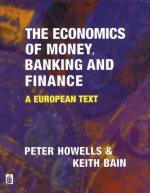Question
Template/outline (for use after you have identified the decision-maker who has an ethical dilemma) Clearly describe the ethical dilemma. Describe what the decision-maker did, and
Template/outline (for use after you have identified the decision-maker who has an ethical dilemma)
Clearly describe the ethical dilemma.
Describe what the decision-maker did, and the Kohlberg stage and the positive and negative consequences that arose or may have arisen from that choice Identify 2 additional possible courses of action that could have been taken, and the Kohlberg stage that would lead to that choice.
Under each choice, bullet the positive and negative consequences for the individual, the company and the relevant stakeholders.
Analyze the following case using the template described above. Ms. TB is the "decision maker" with the ethical dilemma of how to proceed when she realizes that a material, fraudulent adjusting journal entry has been made, and that CFO and Board refuse to correct the error.
AJE Case: About 14 years ago, while investigating the end of the year financial statements at SMC, Ms TB ( as part of her role of Chief Negotiator for the faculty union), discovered some adjusting journal entries in the hundreds of thousands of dollars, moving faculty salaries from one account to another.
She asked to see the paperwork supporting the entries, which contained no explanation and were not signed by anyone.
She asked the Controller that reported to the CFO what was going on, and it was pretty obvious (though unspoken) that the Controller had let Ms TB see the unadjusted as well as the adjusted general ledgers so that Ms TB would discover the huge journal entries that had been made without a written trail of approval.
The adjustments directly affected the calculation of the "50% law," which requires that, after adjustments, 50% of the state money paid to community colleges has to be spent on instruction (as opposed to administration or gardening). This is a major compliance item for state reporting and as part of the official annual audit.
Before the AJE adjustments, the College was NOT in compliance; after the adjustments, the College APPEARED TO BE in compliancebut the original postings had been proper. The Adjusting Journal Entries were completely unjustifiable: their intent was to fraudulently misrepresent that the College was spending at least 50% on instruction, when in fact they were spending less.
Long story shortit turns out that CFOs in community colleges all over CA were deliberately miscalculating this number. In a hearing in Sacramento, lawyers for the Community College League testified that this was a law that was not meant to be followed. Both Republicans and Democrats were outraged that college administrators were picking and choosing what state laws they would comply with, so A Bureau of State Auditors (Links to an external site.)(BSA) audit was therefore commissioned.
The BSA originally audited 3 districts, but expanded it to 10 when they found problems, and issued Report 2000-103:
Oversight by the Chancellors Office Allows Districts to Incorrectly Report Their Level of Spending on Instructor Salaries (Links to an external site.)
Finding 1: Six of 10 districts did not meet the 50 percent threshold for spending on instructor salaries despite having reported compliance with the law.
Finding 2: We estimate that, in total, the six districts spent $10 million too little on instructor salaries.
Extrapolated, this was a $100 million annual problem. End of case
Step by Step Solution
There are 3 Steps involved in it
Step: 1

Get Instant Access to Expert-Tailored Solutions
See step-by-step solutions with expert insights and AI powered tools for academic success
Step: 2

Step: 3

Ace Your Homework with AI
Get the answers you need in no time with our AI-driven, step-by-step assistance
Get Started


